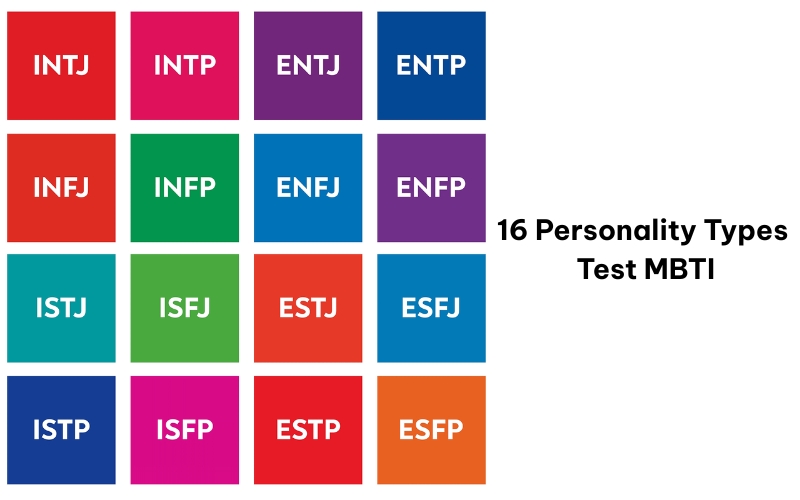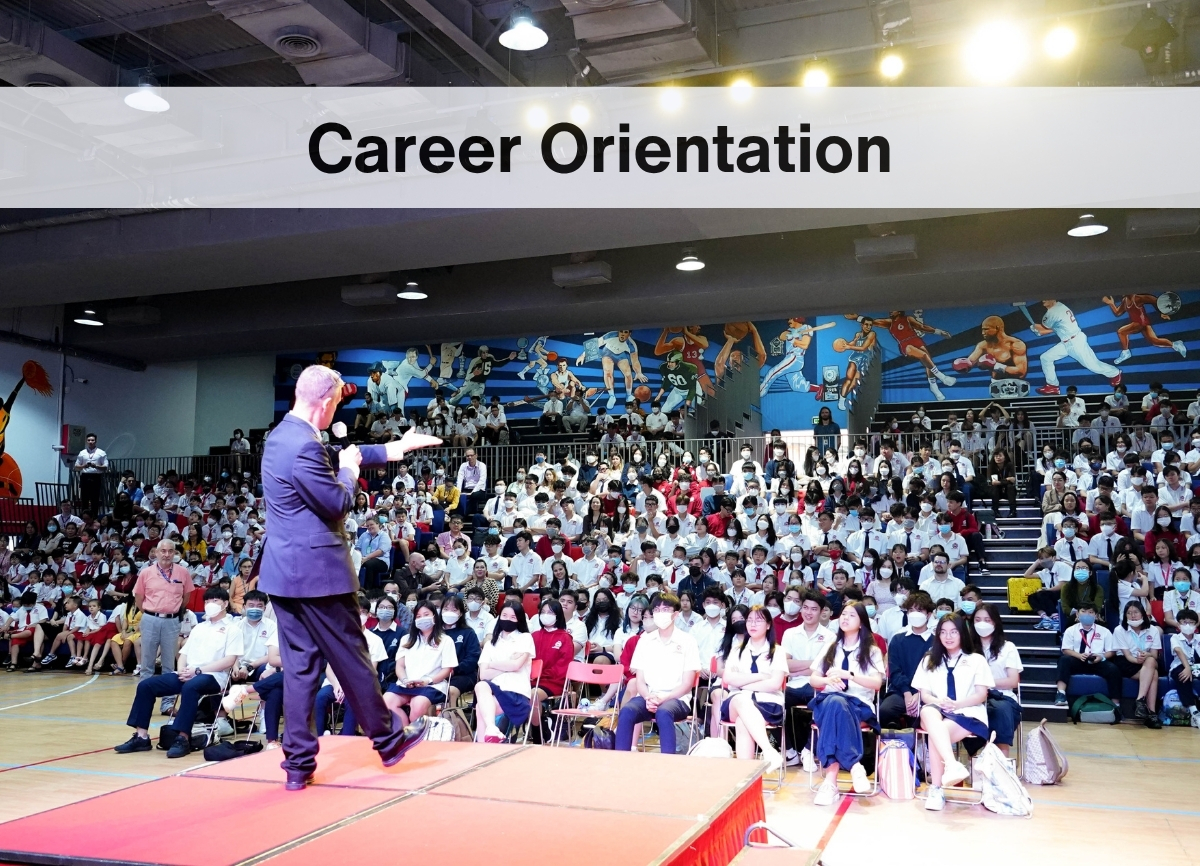9 Effective career orientation steps to define your future and set clear academic goals
Career orientation is a pivotal turning point for high school students. A well-defined direction helps them choose the right path to serve and develop their future careers successfully. If you’re still navigating this important topic, this article from the International School of North America (SNA) will provide the insights needed to make an informed decision. If you are dreaming of getting into a top university or are still uncertain about your future path, SNA’s
“Pathway to World’s Top University (PTU)” program is the perfect preparation for you. Designed as a four-year roadmap from Grade 9 to Grade 12, PTU not only helps students with self-discovery but also equips them with the knowledge, soft skills, and practical experience needed to stand out in university applications worldwide.
What is career orientation?
Concept
Career orientation is the process through which individuals identify professional goals that align with their personal attributes for the future. This choice requires balancing various factors, including personal abilities, interests, personality, and family circumstances, alongside external factors like income potential, job opportunities, and labor market trends. Proper career orientation enables individuals to create more effective plans for learning and personal development, ultimately improving their long-term quality of life.
Who needs career orientation?
Career orientation is not just for students; it’s for anyone at a career crossroads. This includes high school students preparing for university, recent graduates, job seekers, and even professionals looking to advance or change their career paths.
When is career orientation needed?
Career orientation should begin early, especially at two critical junctures: at the end of high school and after graduating from university or college. These are periods that demand significant decisions about one’s field of study or employment. Getting it right from the start helps individuals choose a suitable profession, avoiding wasted time and money on ill-fitting choices and building a solid foundation for future career development.
The role and benefits of career orientation
The importance of career orientation for students
- Ensures a better quality of life: Choosing a suitable career is fundamental to securing your future quality of life. A mismatched job can lead to frustration, stagnation, and a loss of confidence.
- Aligns with strengths: Proper guidance helps students identify careers that match their natural talents and strengths, reducing the risk of quitting or working in an unrelated field.
- Paves the way for success: When you do what you love, you are more likely to unlock your full potential and achieve success.
- Clarifies academic goals: Effective career orientation helps students define clear academic targets and choose the right university, saving time and money by focusing on useful courses for their future careers.
Benefits for students
- Clear direction and goals: Students can more easily select a major that aligns with their interests, personality, and abilities. This fosters a passion for learning and a drive to achieve goals.
- Improved quality of life: Early career planning provides more time to train and acquire necessary knowledge, expanding opportunities and shortening the job search process after graduation. A good job that matches your abilities provides financial freedom and a more stable life.
- Increased productivity: A dream job is a powerful motivator, encouraging continuous effort and achievement. Conversely, being in the wrong field can lead to boredom, poor performance, and giving up easily.
- Enhanced promotion opportunities: Choosing the right field fosters enthusiasm and creativity, opening doors for career advancement and improving one’s quality of life.

TOP 5 careers of the future
As technology evolves, new career fields are emerging. Based on insights from Alec Ross, author of
The Industries of the Future, here are five fields expected to be crucial.
- Robotics: Robots are moving beyond manufacturing into healthcare, education, and home services. The workforce will need professionals who can not only operate but also design, develop, and integrate these technologies into daily life.
- Genetic technology: Advances in genomics are creating a promising industry around personalized medicine, gene editing, and DNA-based early disease diagnosis.
- Digital finance: The rise of cryptocurrency and blockchain technology is reshaping the global financial system, creating demand for blockchain developers, crypto-market analysts, and digital security experts.
- Cybersecurity: As data becomes more critical, protecting it from threats is a top priority for individuals, businesses, and governments. Cybersecurity experts who can combat hackers and malicious software are in high demand.
- Big Data: Data is now one of the world’s most valuable resources. Professionals skilled in data analysis, machine learning, and AI will be central to every sector, from business to healthcare. Those with data processing and analysis skills will have a significant advantage in the future job market.
Methods for career orientation and self-discovery
Here are several effective methods students can use to determine their future career path:
- Take the MBTI test: The Myers-Briggs Type Indicator (MBTI) is a popular personality assessment that helps identify your personality type and suggests suitable careers.

- Use career orientation websites: Online platforms offer valuable tools and information. Some useful sites include LinkedIn.com , TalentBold.com , Mymajors.com , and Myfuture.com.
- Make your own decisions: Self-reflection is key. Ask yourself: What are my strengths? What do I enjoy? What values are important to me? Answering these questions helps you choose a career that feels meaningful.
- Research job market trends: Understanding which industries are growing provides insight into future opportunities and career stability. Fields with strong growth include information technology, AI, big data, healthcare, renewable energy, and education.
- Dermatoglyphics (Biometric Fingerprint Analysis): This is a highly-regarded method for career orientation. It analyzes the link between fingerprints and the brain to identify potential talents and personality traits.
- Take the Holland Code career test: This highly-regarded test, developed by psychologist John Holland, categorizes people into six personality types to suggest fitting careers: Realistic (Doers), Investigative (Thinkers), Artistic (Creators), Social (Helpers), Enterprising (Persuaders), and Conventional (Organizers).

9 steps career orientation process
Step 1: Understand yourself
This foundational step involves identifying your interests , abilities (strengths and weaknesses) , and core values (e.g., income, stability, creativity). You can use personality tests like MBTI or Holland’s test, or simply list what you enjoy and what you do well.
Step 2: Research career trends and the labor market
Explore different professions beyond their titles. Investigate the daily tasks, required skills, work environment, and future growth potential of industries that interest you. You can find information through books, career websites, or university fairs. Follow reports from organizations like the World Economic Forum (WEF) and monitor job portals to see which sectors are in high demand.
Step 3: Connect yourself with careers
Match your self-assessment results with potential career fields. For example, an outgoing person who enjoys helping others might suit psychology, education, or communications. Create a shortlist of 5-10 potential options.
Step 4: Evaluate influencing factors
Consider external factors like family expectations and financial support , societal trends and workforce needs, and your own academic performance and health. A realistic assessment of these elements will help you make a practical decision.

Step 5: Seek advice from experienced people
Talk to teachers, parents, alumni, or professionals working in fields that interest you. Their real-world insights into daily tasks, challenges, and necessary skills are invaluable. However, use this advice for guidance; the final choice must be your own.
Step 6: Research admission requirements
Once you have a field in mind, identify universities that offer relevant programs. Research their admission criteria, including required subjects , minimum grades from previous years , and any language proficiency requirements (e.g., IELTS, TOEFL, SAT). Also, consider tuition fees and scholarship opportunities.
Step 7: Set academic goals
Create a concrete academic plan using the SMART (Specific, Measurable, Achievable, Relevant, Time-bound) framework. For example, “I will achieve an 8.0 in Literature and a 6.5 IELTS score in 6 months if I choose the Communications program at university A”.
Step 8: Gain experience and develop skills
Participate in extracurricular activities, clubs, internships, or part-time jobs. These experiences help you test your interests, develop essential soft skills like communication and teamwork, and build a professional network.
Step 9: Be flexible and adapt
Career orientation is an ongoing process, not a one-time decision. Your interests may change as you learn and grow. Be open to re-evaluating your goals and adjusting your path. This adaptability is a sign of maturity, not failure.
Key considerations for your career path
Avoid these common pitfalls when choosing a career:
- Not taking it seriously: Rushing the decision can lead to regret or needing to change direction later.
- Choosing based only on grades: High scores don’t guarantee job satisfaction. Consider your personality and true abilities.
- Blindly following trends: A “hot” job today might not suit you or be in demand in 5-10 years.
- Peer pressure: Don’t choose a path just because your friends are, as it may not be right for you.
- Following family expectations without self-reflection: Your career is your journey. Ensure your choice is based on self-understanding.

SNA’s “Pathway to World’s Top University” program
SNA’s Pathway to World’s Top University (PTU) program guides students from Grade 9 to 12 through a structured process of self-discovery and preparation.
- Grade 9: Self and career exploration.
- Grade 10: Narrowing down career choices and researching university requirements.
- Grade 11: Preparing for university applications and future careers.
- Grade 12: Finalizing applications and preparing for university life.
The program develops a comprehensive skill set:
- Soft Skills: Time management, resilience, teamwork, and communication are honed through group projects and leadership activities.
- Academic Skills: Students enhance their research abilities, essay writing techniques, and test preparation to meet university standards.
- Practical Skills: Workshops on personal finance, resume building, and professional networking prepare students for the real world.
In addition, the program integrates practical experiential activities to help students gain a clearer understanding of their upcoming journey, including:
- Career Workshops and Guest Speakers: Students have the opportunity to hear directly from professionals across various industries.
- Mock Interviews: These sessions help students build confidence and learn how to clearly present their personal goals.
- Leadership Conference: Group activities, presentation opportunities, and stress management workshops prepare students for future leadership roles.
- Transition Preparation: Workshops on budgeting, cultural adaptation, and stress management equip students with the skills needed for independent living.
SNA – The International School of North America, located in District 7, Ho Chi Minh City, is proud to accompany parents and students on their journey to pursue dreams and become future leaders. SNA is honored to be an IB World School, fully authorized to offer the globally recognized International Baccalaureate program across all three levels: IB PYP (Primary Years Programme), IB MYP (Middle Years Programme), and IB DP (Diploma Programme). The IB Diploma (IB DP), in particular, is highly regarded by top universities worldwide.
SNA also offers a multicultural learning environment and a global network. Students can access diverse language programs, including English, Spanish, French, Korean, Chinese, and more – enabling effective communication and international networking to become global citizens in the future.
For more information about the school and tuition fees, parents are encouraged to contact our Admissions Office for dedicated support.
We hope this article has provided valuable insights into career orientation and helped you move closer to choosing the right path for your future. Visit the SNA website to discover more useful knowledge on learning experiences and personal development.




















